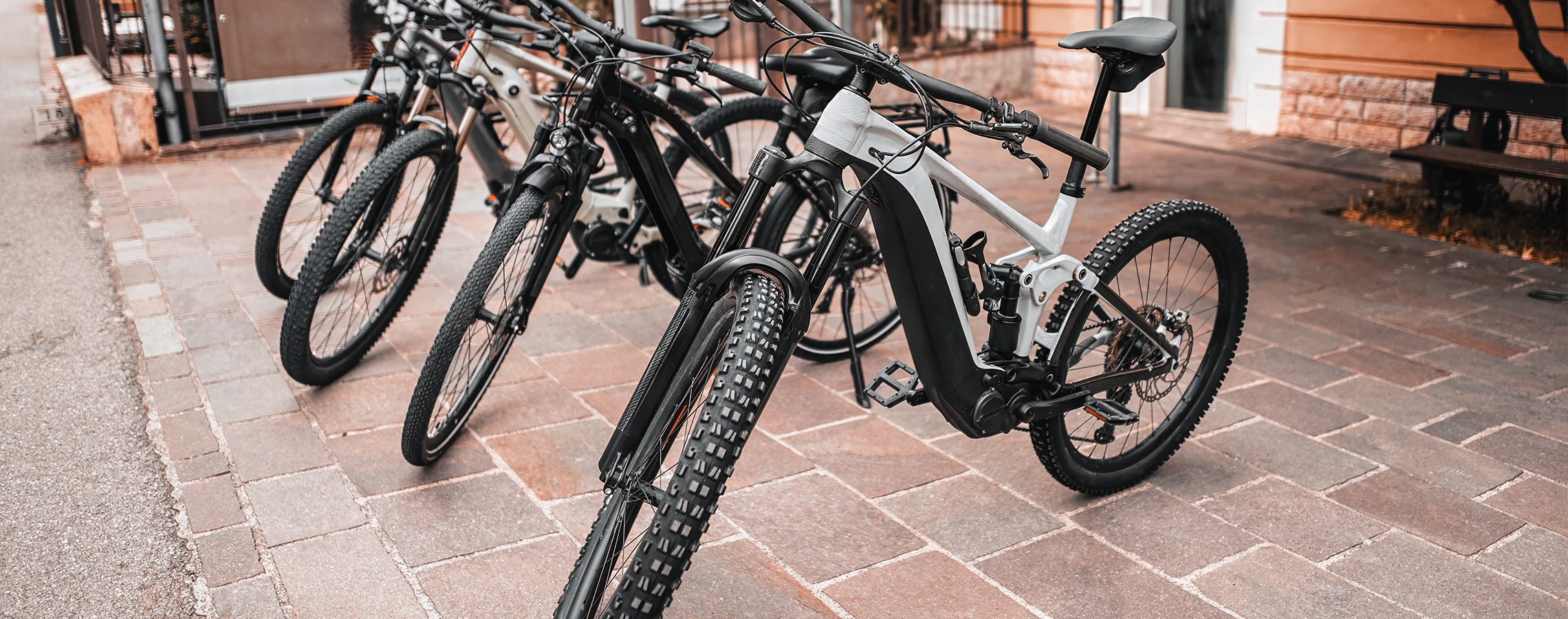
More than cars: the story and uses of electric mobility
-
27 October 2025

Electricity drives a galaxy of vehicles — large and small, professional and domestic, practical and playful. They differ in shape, purpose, and spirit: from the most serious work machines to the light-hearted ones designed for fun.
From 19th-century trams to warehouse forklifts, from rental Segways to robotic lawnmowers tracing random paths across manicured lawns — the principle remains the same: a rechargeable battery, a motor, and a few wheels. And if four wheels are too many, two — or even one — will do.
Small-scale mobility: e-scooters and e-bikes
In the past decade, Europe’s cities have filled with fleets of electric scooters and bicycles. It’s a recent revolution, but its roots reach back to the 19th century. As early as 1895, an inventor from Canton, Ohio — Ogden Bolton Jr. — patented an electric bicycle powered by a rudimentary battery. Heavy and cumbersome, it resembled a motorbike more than a modern bicycle.
The electric scooter came much later — an idea born in the 1990s that truly took off with the rise of urban sharing fleets, now a familiar sight in almost every major city.
Today’s e-bikes are lighter and more powerful, while scooters come in all shapes and sizes — ultra-light, foldable, or even off-road. Together, they’ve reshaped the landscape of urban micro-mobility, offering faster, cleaner, and more flexible ways to get around.

Hard work, silent engines: professional electric vehicles
In warehouses around the world, the true electric hero is the forklift. Battery-powered versions first appeared in the 1920s, designed to operate safely indoors. Over time, they have eased the workload of countless workers, transformed logistics, and revolutionised the way we move goods — making supply chains faster and more efficient.
The world of electric industrial vehicles doesn’t end there: it includes mobile platforms, compact transporters for personnel, indoor vans, and towing vehicles — all designed to simplify daily operations and optimise space.
Even agriculture has embraced electrification. Battery-powered tractors were already being tested in the 1960s, and today, thanks to advanced technology, they’re making a strong comeback.
Public transport: trams, trolleybuses and electric buses
If one symbol defines urban electric mobility, it’s the tram. Italy’s first electric tram ran in Rome in 1890, along Via Flaminia with the approval of King Umberto. That same year, Florence inaugurated the Florence–Fiesole line, one of the first in Europe.
Then came the trolleybus, its iconic overhead wires stitching the urban sky — a discreet yet powerful symbol of an era that now lives mostly in memory. Electric buses, on the other hand, are a more recent innovation. The first prototypes date back to the 1970s, but only with modern batteries did they truly begin to spread, particularly across Asia and Northern Europe.

Over water: boats and other unusual vehicles
Electricity has long found its way onto water. As early as 1903, Copenhagen launched one of the world’s first electric ferries.
Today, many tourist boats on Italy’s lakes and Northern Europe’s canals glide silently thanks to electric propulsion. And let’s not forget submarines — as early as the 19th century, they relied on batteries to move underwater. Even modern research submersibles and deep-sea bathyscaphes continue to use electric propulsion systems.
More recently, electric energy has powered even more spectacular creations — like the Plenitude electric watercraft, seen this summer in Polignano a Mare, Puglia. Designed for aquatic shows, it demonstrates how electric mobility can make waves even in the world of water sports.
The new frontier of tourism: from Segways to electric tuk-tuks
Some vehicles were created more out of curiosity than necessity. The best known is the Segway, the self-balancing, two-wheeled vehicle unveiled in 2001 and heralded as a revolution in personal transport. It didn’t quite transform urban mobility, but it became an icon of guided city tours in places like Rome, Paris, and San Francisco.
In recent years, Segways have been joined by hoverboards and electric unicycles — futuristic gadgets that have also carved out a niche for short urban trips.
Elsewhere, electric tuk-tuks in Bangkok and tricycle taxis in Lisbon and Barcelona blend innovation with local flair. The same goes for electric tourist trains, often seen winding through historic towns — especially at Christmas, when they chug between the stalls of festive markets.

Electric has no limits
The family of electric vehicles is even broader than it seems — from golf carts to urban minibuses, from great successes to half-forgotten experiments. Electric mobility is not a new trend, but a tradition more than a century old, constantly reinventing itself through innovation.

We live surrounded by silent, versatile wheels — filling our cities and shaping our daily lives. So next time you plug in your electric car, take a moment to think: electric mobility is everywhere, and it’s only just getting started.
Don’t stop here
There’s much more to discover!
Other related articles
Electric cars – meaning full electric vehicles – are powered by an electric motor that operates using electricity stored in batteries. But how does this motor work? In this article, we seek to clarify.
When approaching any specialized field, the first thing you often encounter is its own unique jargon. Technical expressions, idioms and acronyms form a true language of their own—one you need to learn to fully find your bearings.
Driving style is the only external factor we can control to extend the range of our electric car.


